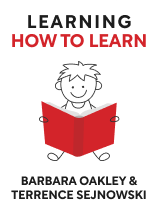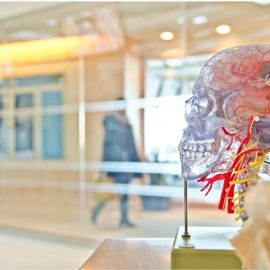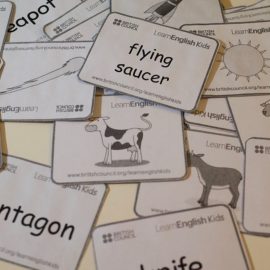

This article is an excerpt from the Shortform book guide to "Learning How to Learn" by Barbara Oakley and Terrence Sejnowski. Shortform has the world's best summaries and analyses of books you should be reading.
Like this article? Sign up for a free trial here .
Would you like to learn more, faster? How can you make the best use of your brain’s memory capacity when you study?
Your memory capacity is limited. It takes up mental space and energy. Learning How to Learn authors Barbara Oakley and Terrence Sejnowski share two study tips that help you leverage your memory capacity.
Keep reading for two learning strategies for students.
Make Efficient Use of Your Memory
Oakley and Sejnowski discuss some learning strategies for students that are based on making the best use of your brain’s memory. They note that your brain has two different types of memory: working memory and long-term memory.
Your working memory resides in your prefrontal cortex (the part of your brain just behind your eyes). It holds whatever you’re actively thinking about at the moment, and tends to drop any neural connections that go unused for more than about ten seconds. On average, it can only hold about four ideas (or active chains of synapses) at once.
(Shortform note: Different studies have come up with different numbers for how many ideas your working memory can hold at once. In the 1950s, researchers thought working memory could hold about seven ideas, but by the early 2000s, studies indicated it could hold only about four. Today, there is still little agreement on a definite number—some studies indicate working memory can hold two or three ideas at the same time, while others suggest it might be as high as six.)
On the other hand, your long-term memory resides in your cerebral cortex (the outer part of your brain), although the synapse chains for long-term memories initially form in your hippocampus. It can hold an unlimited amount of information and ideas and store them indefinitely, but to think about any of them, you have to load them into working memory.
| Types of Long-Term Memory Oakley and Sejnowski’s description of long-term memory correlates with other authors’ descriptions of a specific type of long-term memory called “declarative memory.” In Moonwalking with Einstein, Joshua Foer says your long-term memory is divided into “declarative” memory and “nondeclarative” memory. Declarative memories consist of facts and experiences that you can consciously recall. Foer says declarative memories are stored in synapse chains that form in your hippocampus. This matches Oakley and Sejnowski’s description. Meanwhile, nondeclarative memory holds information that you access subconsciously. This includes motor skills (like riding a bike) and your basic sense of self. Foer says these memories are formed in other parts of the brain, such as the neocortex, cerebellum, and basal ganglia. This is something Oakley and Sejnowski don’t discuss. |
Tip #1: Avoid Distractions
Oakley and Sejnowski’s first tip on how to efficiently use your brain’s two types of memory is to eliminate distractions while you’re studying. Distractions tie up some of the limited capacity of your working memory. Since you learn by connecting ideas in working memory, reducing the amount of working memory that you have available will slow down your learning.
Thus, the authors recommend that when studying, you might, for example, silence your cell phone, turn off the TV, find a quiet place to study, or set aside a certain time block so you can tell your friends not to disturb you during that time.
| Types of Distractions and What to Do About Them In his book Indistractable, Nir Eyal provides a systematic approach to eliminating distractions. First, he observes that distractions tend to come from either people or technology. Then, he identifies the four most common distractions of each type and offers advice on how to eliminate them. Eyal says people-based distractions typically come in the form of in-person interruptions, email, chat/text, and meetings. He recommends managing them by reserving specific blocks of time in your day for dealing with these kinds of communications and keeping people informed of when you are and are not available. Technology-based distractions typically come from your smartphone, desktop clutter, articles, and social media. Eyal recommends deleting apps that you don’t need, blocking or disabling most automatic notifications, and keeping anything that you don’t need for what you’re currently working on out of sight instead of leaving it open on your desktop where it could distract you. |
Tip #2: Avoid Multitasking
The other tip the authors provide based on types of memory is to avoid multitasking. When you work on multiple tasks in parallel, you are constantly shifting your focus from one to the other. Every time you switch from one task to the other, your brain has to clear your working memory and load different information into it. This takes mental energy, so the more you multitask, the more you wear yourself out mentally.
(Shortform note: Like Oakley and Sejnowski, Brian Tracy argues that multitasking reduces your productivity. Specifically, he claims that after being interrupted or shifting your focus, it takes about 17 minutes to fully refocus on the task at hand. Based on the neurological model that Oakey presents, we’d say this 17-minute period is the time it takes your working memory to reload all the synapse chains that you need. This also implies that if you’re shifting your focus every 17 minutes or less because you’re trying to multitask, you may not get any focused work or studying done.)

———End of Preview———
Like what you just read? Read the rest of the world's best book summary and analysis of Barbara Oakley and Terrence Sejnowski's "Learning How to Learn" at Shortform .
Here's what you'll find in our full Learning How to Learn summary :
- How anyone can learn to master any subject
- Study tactics that you can use to excel in whatever you’re learning
- A look at the neuroscience behind how you learn






